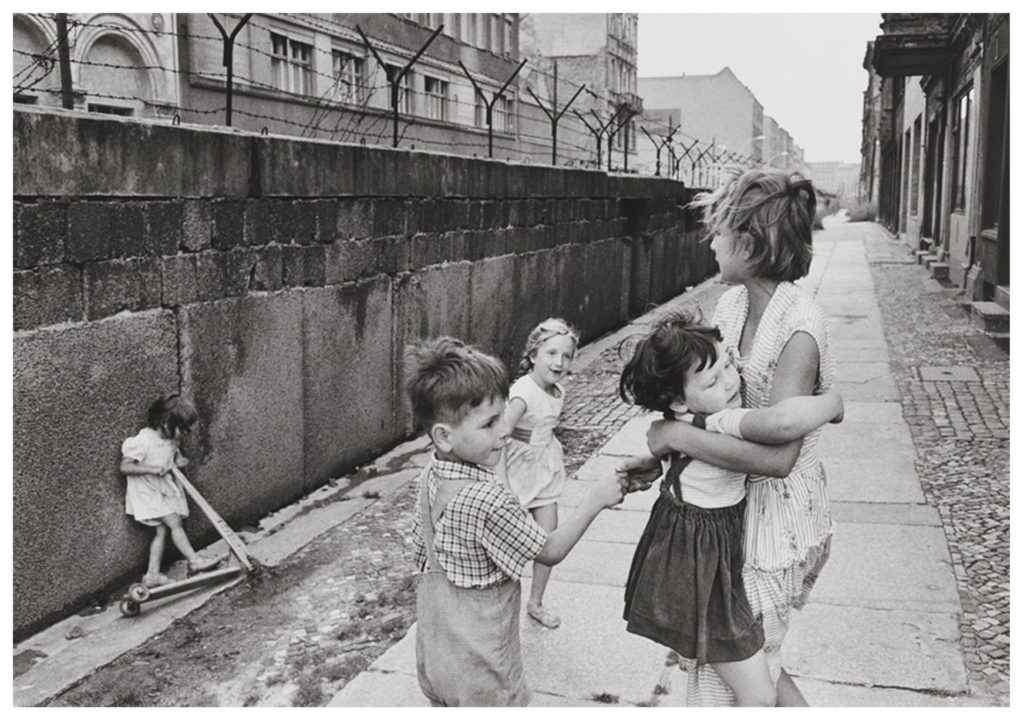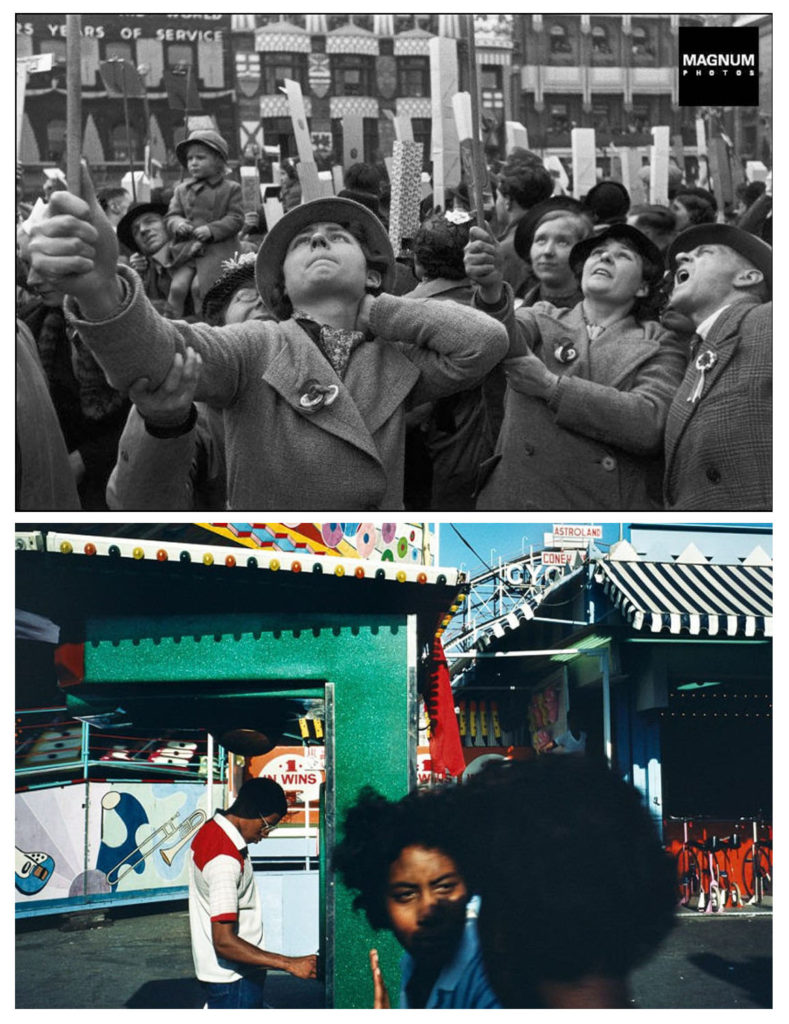Henri Cartier-Bresson (1908-2004), arguably the most significant photographer of the twentieth-century, was one of the co-founders of Magnum Photos in 1947 and champion of the “decisive moment”. He brought a new aesthetic and practice to photography, initiated modern photojournalism, and influenced countless followers. Henri Cartier-Bresson has intuitively chronicled decisive moments of human life around the world with poetic documentary style. His photographs impart spontaneous instances with meaning, mystery, and humor in terms of precise visual organization, and his work, although tremendously difficult to imitate, has influenced many other photographers. His photographs may be summed up through a phrase of his own: “the decisive moment,” the magical instant when the world falls into apparent order and meaning, and may be apprehended by a gifted photographer.
The decisive moment: widely considered to be one of the most important photo books of the twentieth century. Pioneering for its emphasis on the photograph itself as a unique narrative form. Originally titled Images à la Sauvette (“images on the run”) in the French, the book was published in English with a new title, The Decisive Moment, which unintentionally imposed the motto which would define Cartier-Bresson’s work. The decisive moment refers to capturing an event that is ephemeral and spontaneous, where the image represents the essence of the event itself.
Key Images


This image has been taken outside in natural lighting. This image is very bright with contrasting tones of dark grays and blacks. The focal point of this image is the children in the foreground of this image. This image was taken at the Berlin wall in 1962. The children appear to be playing in the streets. This image is a whole contrast in itself as the Berlin wall was seen as a bad thing as it separated the east and west of Berlin (from 1961-1989) leaving people from each side unable to see family members and stopped people from being able to work . However the children are playing next to it which is seen as a happy positive thing.
Magnum Photography
Through 1944 and 1945, Cartier-Bresson photographed the occupation of France and its liberation. In 1947 he co-founded the Magnum agency with Robert Capa, Chim (David Seymour), and George Rodger and he spent the next twenty years traveling around the world. Magnum is one of the first photographic cooperatives, owned and administered entirely by members. The staff serve a support role for the photographers, who retain all copyrights to their own work. In 1966 he left Magnum, which remained his agent, and devoted himself to drawing.
Compare and Contrast
Henri Cartier-Bresson and William Klein

Both Cartier-Bresson and William Klein’s images are solely in black and white. The above image (William Klein’s) is very dark toned with lots of blacks and grays and the below image is more bright and white toned even though both images look to have been taken outside in natural lighting. The subjects of both images also appear to know in someway that they are being photographed, whether they were told or spotted the camera themselves they are both engaging and interacting with the camera. The above image has the focal point of the two children as they are extremely close to the camera leaving very little background space. However in the image below the foreground is of the children but they are very low in the frame leaving a lot of background of the wall behind them.
Henri Cartier-Bresson and Alex Webb

Both of these images have been taken in natural lighting of people who are unaware they are being photographed. The above image (Cartier-Bresson’s) is very dull and grey toned whereas the below image is full of various colours. Both images have been taken in the streets however in the first image the frame is full of people who look like they are at some form of event and in the second image the frame only has 3 people in it. Two of those people are in the foreground of the image and are slightly out of focus whereas the man in the background is fully in focus like the rest of the image. In Cartier Bresson’s image this contrasts the below image as the foreground of the people is in focus and the background of the buildings are slightly blurred.
